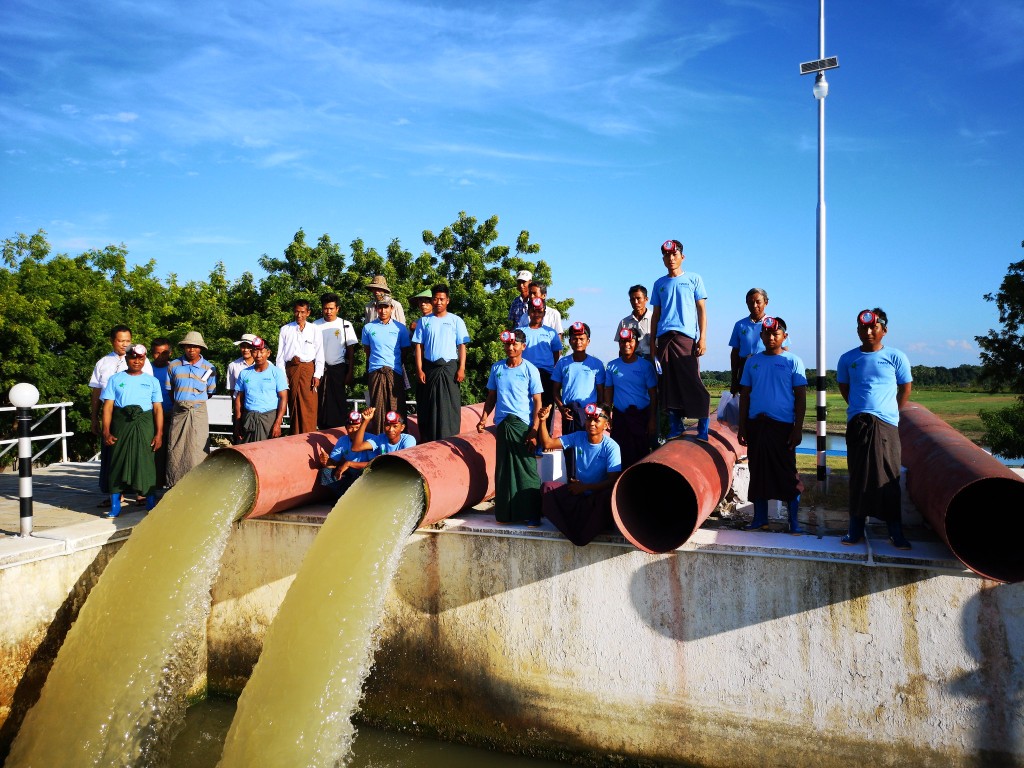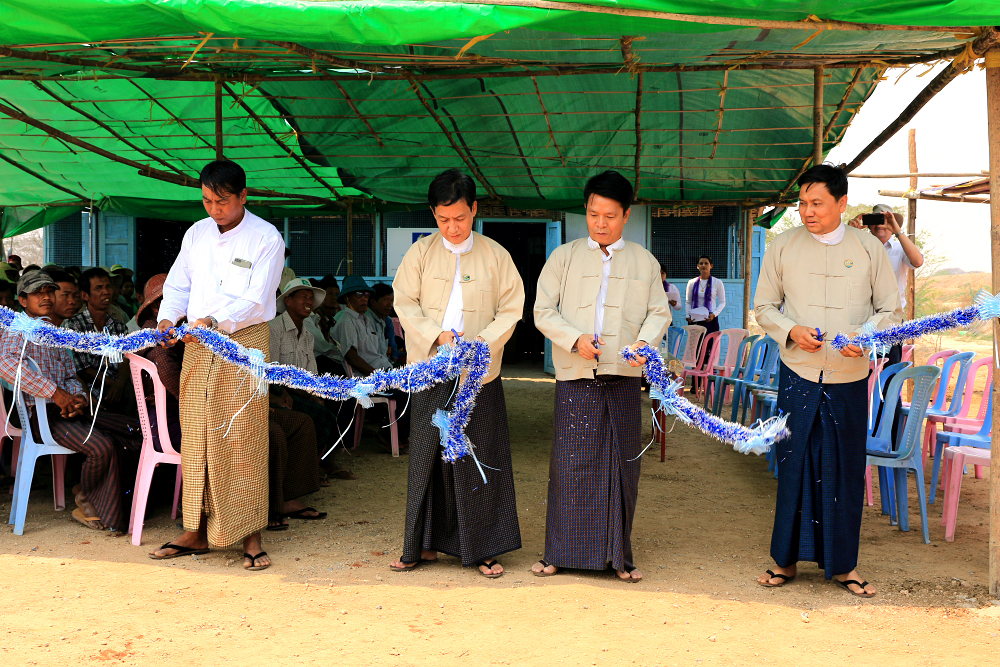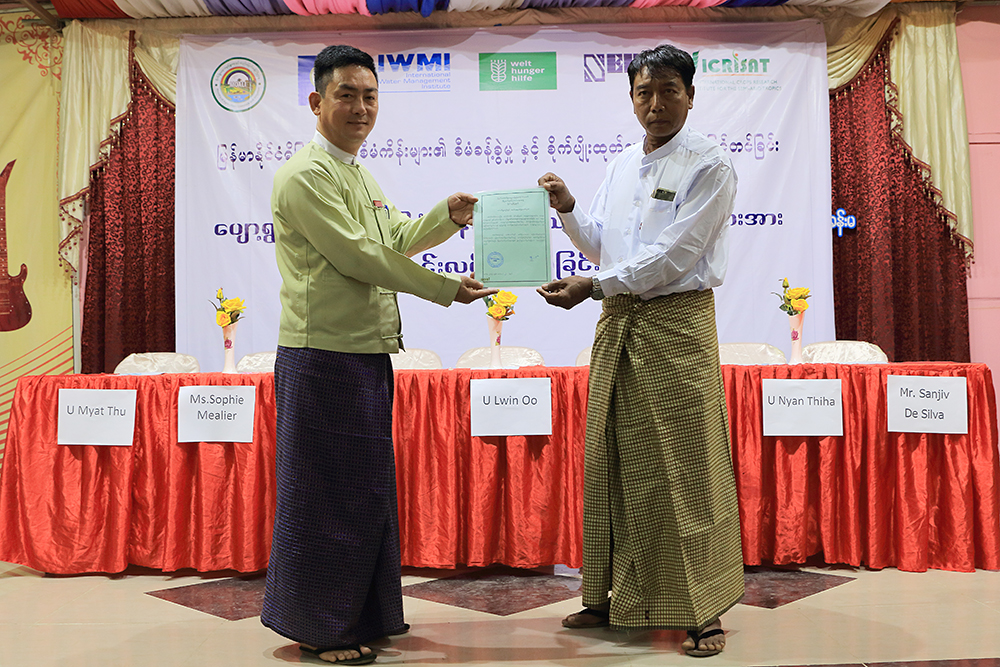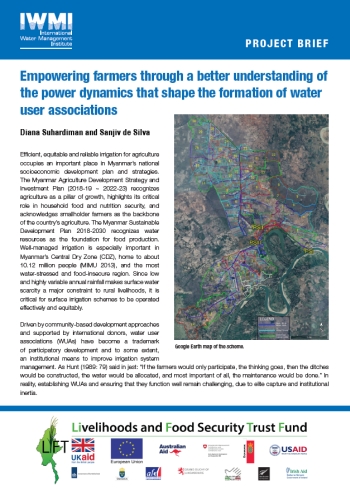A first for Myanmar – participatory management of a pump-based irrigation scheme

Participatory irrigation management, typically focused on local water user associations (WUAs), is vital for “leaving no one behind” (the UN-Water theme of World Water Day 2019) in the quest to enhance rural livelihoods. This is a main conclusion from many years of research carried out by the International Water Management Institute (IWMI) and its partners in Africa and Asia.
The research has also shown, however, that WUAs are not a panacea – least of all when these are introduced in a top-down fashion. On the contrary, if WUAs are to succeed in providing farmers with equitable access to water and in resolving the conflicts that invariably arise, they must be constructed from the ground up, involving local actors in the search for a workable formula.
One of the newest examples of this comes from work just completed in Myanmar’s Central Dry Zone, which is home to more than 10 million people and is the country’s most water-scarce and least food-secure region. As part of a strategy to boost agricultural production, the Government of Myanmar has created more than 300 pump-based irrigation schemes across the Zone. In one of them, the IWMI-led Pyawt Ywar Pump Irrigation Project (PYPIP) supported the formation of a WUA – the first to be set up in these schemes – marking an important milestone on the country’s journey to more inclusive irrigation development.
The scheme on which PYIP focused draws water from the Mu River to irrigate various crops, including paddy, pulses and wheat. Although this scheme has the potential to irrigate nearly 2,025 hectares (with slightly more than 525 in paddy and the rest planted to other crops), the actual area irrigated has been far lower – at less than a third of the potential area in 2013-14 and about a fifth in 2014-15.

IWMI led the implementation of PYIP in an alliance with Welthungerhilfe (a German private aid organization), National Engineering and Planning Services (NEPS, a private company in Myanmar), and the International Crops Research Institute for the Semi-Arid Tropics (ICRISAT). At the same time, the United Nations Office for Project Services (UNOP) undertook a thorough rehabilitation of irrigation scheme infrastructure. Carrried out in in Myinmu Township, Sagaing Region, PYPIP received support from the Livelihoods and Food Security Trust Fund (LIFT) and also contributed to the CGIAR Research Program on Water, Land and Ecosystems (WLE), supported by the CGIAR Fund donors.
IWMI researchers supported the establishment of the WUA in collaboration with Myanmar’s Irrigation Water Utilization Department (IWUMD). The WUA’s effectiveness will depend heavily on farmers and leaders’ ability to navigate the prevailing power structure and relationships in rural areas. To better understand these, project researchers consulted with farmers, canal representatives and many others in a series of workshops. Throughout the process, the researchers ensured inclusive decision-making by means of continuous consultation with stakeholders at different scales, including the poorest and most marginalized farm households.
These consultations brought to light the key causes of scheme failure in the past. One problem was the power asymmetry at different levels, rooted in the location of villages within the scheme and in the politics between villages. This power asymmetry resulted in unequal distribution of irrigation water, giving rise to conflicts.
To address this problem, the project proposed a new multi-layered institutional setup that facilitates farmer representation and coordination. The resulting WUA oversees three pumping station coordination committees and manages a total of 18 water user groups, encompassing 53 subgroups. The WUA developed its own by-laws and by March 1, 2019, had 693 registered members.

The WUA should be able to irrigate more than 1,750 hectares of cropland (85 percent of the scheme’s potential), assuming that it co-manages the scheme efficiently and shifts to high-value vegetables and fruits, which demand less water. By March 2019, 89 farmers had begun growing one of the newly introduced high-value crops, and 779 farmers had received training in best practices for the production of rice, pulses, vegetables and fruit trees.
IWMI and its partners held an event with project stakeholders on March 25 to share lessons learned and recommendations. These are being used to formulate a set of guidelines for establishing WUAs in the Central Dry Zone’s other pump-based irrigation schemes. The first WUA received its temporary license during the stakeholder event and opened its office at the second pump station in the Pyawt Ywar scheme. More than 300 people took part, including 200 WUA members and their management board as well as representatives from government institutions at the regional, district and township level, LIFT, Australia’s Department of Foreign Affairs and Trade (DFAT), and PYPIP project partners.
Read a related article on the LIFT website
Also read a related article at Mizzima.com
View the photo story on wle.cgiar.org


